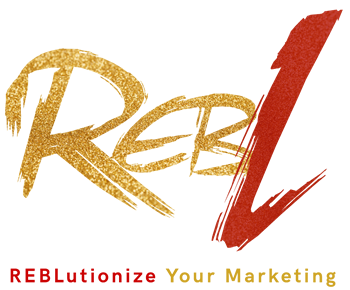Image credit – diego_cervo – Envato Elements – Licensed – All rights reserved
#1: Start with a Strategy
Number one is start with your strategy. Video is a great tool but it really needs a strategy and so we’re going to talk about what goes into a really good video strategy.
Know what topics you are an expert on and your audience wants to learn about.
The first thing that you need to do is really consider the topics your audience is interested in learning more about. And once you figure out those topics, you need to put a content calendar together so that you can plan on how you’re going to roll those videos out.
Understand your video objectives
You need to understand what the objective of your videos are going to be. What do you want to get out of them?
- Are they educational?
- Promotional?
- Do you have a new service or product coming out?
And then once you’ve got your topic schedule, you’ve done your research, you’ve got a content calendar put together, you definitely need to then decide who’s going to be on camera. So how do you choose who’s on camera?
Who should be on camera?
The person that knows that topic well is a good first choice to be on camera. This could be a partner at the firm or a product manager, that’s talking about a specific product that they know really well. These people are good people to consider to have on camera. If this person isn’t available or not good on camera you should consider working with professional talent, aka, an actor.
Expert tip:
Once you’ve figured out the talent on camera done, here’s a budgeting tip that we use with ourselves and our clients. Don’t just film one video, film multiple videos during that time.
Whether you’re doing it yourself or you got a professional crew, especially if you have a professional crew coming in, make that time valuable. Film multiple videos at one time. It’ll definitely save on your budget.
Last tip on your video content strategy piece, is SCHEDULE IT and FILM IT. I can’t stress that enough. Every time you film and follow this process through the better it gets.
#2: Script or Script Outline Your Videos
Well, it’s important that you know what you’re going to be talking about. People get a little hung up when they’re reading through a script and they think that they need to say everything word for word. This tends to create a lot of anxiety, especially when you’re on camera. So one of the best things to do is just bullet out the topics that you want to talk about. You are a subject matter expert and the more comfortably you can articulate what you do and why you do it, the more authentic it’ll be when it comes across to the audience.
Script Outline
REBL has a script outline that we use. It’s fairly simple. Here’s a link to the script outline. On the left side is your bullet points, what you’re going to talk about. We always say try to keep it to three core points that you want to make. And then the right side is for your B-roll. Images, graphs, and on screen word overlays. Whatever you’re going to use to compliment your talking points and making them stronger throughout the video. Scripting is very important. Don’t just wing it. Not only is that a waste of your time but it’s the waste of the viewer’s time. I like to think that scripting also allows you to identify. Maybe there’s something that you haven’t thought out as far as a topic and it’ll help you maybe do that additional research that you need and capture the right data to make that video as valuable as possible.
#3: Practice
Number three best practice is practice. Oh my gosh, I can’t stress this enough and we’re guilty of it too. You have to practice. So you got your strategy in place, you got your script written and you’ve got to practice. And Michele, my gosh, we’ve had some video shoots that are painful because we didn’t practice or the client didn’t practice. So why should people practice?
Be comfortable with your talking points.
You want to get comfortable with the points that you’re trying to make and understand, especially if there’s an exchange between two people, where one person starts and the other person stops. A thing you can do that can help with practice is what they call a table read. So you sit down with the people you’re going to be on film with and you just read through the script together to get comfortable with how that exchange is going to go. Practice is important.
Table Read
One of my favorite examples of a table read is if you’re a Game of Thrones fan… Spoil alert. If you haven’t seen the last episode, fast forward… Is that famous clip of Kit Harington where he finds out he’s going to kill Emilia Clarke, Daenerys Targaryen in the show, in the last episode. And you can see the whole table, they’re just absolutely stunned. Kit is just beyond himself when he finds out that his character is going to kill Emilia’s character. It’s such a kind of classic moment. So you can see even actors, famous actors, they are table reading, they’re practicing. Here’s a link to the video. https://www.youtube.com/watch?v=AtMT5jJmvrE
You have to practice, practice, practice.
#4: Lighting
Number four is your space and lighting is so crucial to when you’re filming. If you’re going to spend the time and money, you really should have a good space and good lighting. Lighting makes all the difference in the world. It makes your complexion look good. And the last thing you want to do is see yourself on camera and feel like you look gray. Like this one time that we did that shoot and we forgot our lighting kit and boy wasn’t that a contrast. Never again will I shoot a video without the lighting. Because I looked like death.
In fact, I had to talk her into even using the videos. You were right. It was one of those days. We forgot the lights and we’ll never do that again. In fact, we shouldn’t have even shot the videos that day. But we did, we did. Live and learn. Learn from our mistake!
Once you pick your space you want to know that you have a lot of room, good lighting. With natural light, you don’t have to have a lot of lighting equipment. Natural light is the best. Also, just having the environment. You want to have a good space where it is lit up. So if you’re in a building or a conference room, trying to find something with windows. Definitely, have lighting equipment to help even out the lighting and any lack of natural light. Your professional team should have a lighting set for you but don’t shoot without light.
#5: Sound
Number five best practice is sound. I think this often gets overlooked. I know we’ve done it and we’ve gotten busted for it, for not having good sound. You can see we’ve got mics on even for our small production. And it’s important because if people can’t hear you or understand what you’re doing or there’s a lot of noise in the background, it’s really distracting. And then the whole point of your video is lost because you don’t have good sound. We definitely like our sound equipment, we like our team. And so if you are doing it with yourself, filming yourself, make sure you get a lava layer that you can plug into whatever you’re filming with.
If you have a professional film crew, which they should obviously have sound equipment, but they should also be able to advise you on the environment. If you’re going to be outside, you’re inside, what kind of sound equipment you’re going to need and what are your limitations. If you’re going to be outside, you’re probably going to be limited on what you can do with that sound equipment. So make sure you’re talking to your crew and planning ahead and have good sound equipment for your video.
#6: Wardrobe
Number six, wardrobe. Which is my favorite topic…dressing for your video. I think for most people it’s common sense. Our rule of thumb is if you’re going to dress for your shoot think about who’s on the other end watching the video. If it’s a client, how would you show up to your client’s office?
It’s important that you wear something that you’re comfortable in. Avoid patterns. Sometimes patterns, especially stripes and plaids, don’t read well with video. Warm colors, neutrals, jewel colors, dark navy blue. Those are great colors. And then again just common sense. For example, REBL is more professional, business causal. We’re talking to other professionals. We want to look that part.
If you’re doing something fun or outside, dress appropriately for being outside.
Expert Tip:
Going back to one of our first points of budgeting. You want to do multiple videos on a same shoot day, wear a different wardrobe for each video. Bring in multiple pieces and your videographer, your crew can help you pick out what you should be wearing on camera and maybe what not to wear on camera.
#7: Body Language
Number seven, your body language on camera. Okay, so this is tough because being on camera’s not natural. It’s not for anybody. So what’s a good tip to get started as far as how to be conscious of your body language?
First thing is sit up straight, standup straight and put your shoulders back. Next is, smile. It’s hard to think that there’s something over there looking at you but there is something over there looking at you. And so just try to remember to smile and sit up straight and hold your posture in a good place.
A trick in chairs with backs, is to sit at the end of the chair and never lean on the back. It kind of forces you to sit up straight because you got nothing to lean on. I’m
#8: Be ok with mistakes
Number eight best practice is be okay with mistakes and minor flaws. This is tough but sometimes you just have to let the sentence flow out a little differently than you planned in your head. And why is that? It’s just more authentic and it’s okay. I don’t think you can afford to do retakes and make your videos perfect. I know we can’t.
What else do you have to let go when you’re filming?
Sometimes you get so hung up on how you’ve scripted something or what you want to say and maybe you miss a point. Unless it’s a critical point that your audience is going to get hung up on, just let it go. Overall, as long as you’re communicating the topics that you want to communicate, let it flow naturally. And if you make a mistake or you do something a little awkward or funny, it’s just who you are. You’re trying to be authentic and you’re trying to educate and that’s what’s most important.
And that goes back to some of our previous points. Writing your scripts, don’t write them out, stick to your bullets and then practicing. That’ll help with some of those minor flaws but we find they’re in every video and that’s okay. So you’ll be okay.
#9: Don’t forget your Call To Action (CTA)
Number nine, don’t forget your call to action. This is so often overlooked. And especially for a business doing a video, you have to have a call to action. You have to tell your audience what to do. That’s the whole point of your video, right?
You want them to do something and it doesn’t need to be salesy. I think that’s what a lot do people get confused on is, “Oh, my call to action. That’s too salesy.” It’s not. It’s just helping your viewer move to the next stage. So maybe they’ve learned a little something from you and now they’d like to learn more. How do they find you? Where do they go? Is there something they could download or research? It’s really important to make sure you have a good call to action so that your viewer knows what’s to do next and they’re not left hanging there.
That’s a good point, you’re taking them through the sales cycle a little bit. So you’ve done a video, you’ve touched on a topic and now it’s come to our website to learn more or download this white paper and get an in depth overview of some kind of topic that we’re talking about or something. Or call us and ask us some questions. Reach out to us. There’s always got to be some kind of call to action.
It’s not salesy, it’s important and it should be part of your video process.
#10: Have Fun
Number 10 in our best practices is enjoy the process and have fun. Doing video production and being on camera is not easy but you’ve got to have some fun with it, enjoy what you’re doing. And the best part is you are creating really great content and it is valuable. So we can’t stress that enough. Michele, I feel like we have fun, don’t we?
Yeah. I think it’s important that your personality comes out. It’s kind of like when you’re networking or you’re at a trade show event, you are just who you are. And hopefully you’re energetic, you’re a little witty and you’re enjoying the process of connecting. And so even though video feels like you’re a little removed, it’s a way to connect and so be yourself and have fun.
Have fun!
Conclusion
Video content and production is complicated. But its worth figuring out and doing it right. When you are ready to brainstorm your video ideas and REBLutionize your marketing with video give us a call at 858.848.7325











